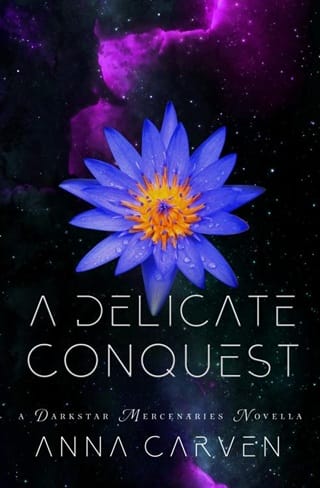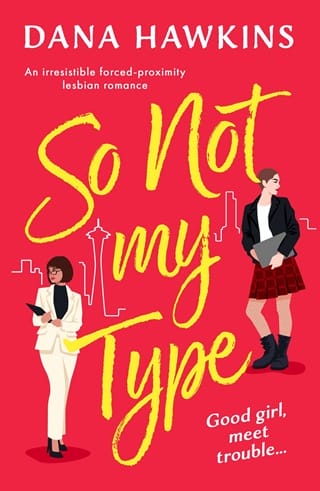24
24
BALLARD REACHED THROUGH the doorway and swept her hand up and down to find a light.
"I forgot to mention the basement," Sally said. "The light is on the left."
Ballard switched sides and found the light, and the stairs down were illuminated.
"Did you and your husband put in this cabinet?" Maddie asked.
"Oh, no, it came that way with the house," Sally said. "Mr. Thawyer built that, and Bruce thought it was pretty unique, so we kept it. Not many houses in Los Angeles have basements, you know."
"Almost none," Ballard said.
"I can't do the stairs anymore," Sally said. "Watch for spiderwebs down there."
"We will," Maddie said.
Ballard locked eyes with Maddie, and they shared a look of excitement and dread. Then Ballard started down the steps with Maddie right behind her.
Some of the lights attached to the rafters were dead. Gray light came in at angles from four casement windows, two on the driveway side, two on the opposite side. There were pull-down shades that were rolled up. The basement was wide open, no partitions or storage rooms. Four thick oak pillars supported the main crossbeams of the house.
The floor was concrete, poured and smoothed at a barely discernible down angle toward an iron-grated drain in the middle.
"Maddie, go back to my car and get those files," Ballard said. "Here." She handed over her key fob. Maddie turned and headed up the steps without a word.
"Also, in the back of my car, there's a crime scene kit that has a pump bottle with luminol in it. Says it on the label. Bring that too."
"You got it," Maddie said.
Left alone, Ballard crouched next to the drain. She believed that horrible things had happened here. It was a long time ago but there were ghosts here, waiting for someone—waiting for her—to set them free.
She felt a solemn duty to them. As with the library of lost souls in the archives at Ahmanson, she carried the burden.
Maddie was soon back with the files and luminol. Ballard opened the file marked Betty and held the photos up under a bulb to compare them to the room they were in. The drain grate was a match. The rough surface of the concrete and the sweep patterns left by a trowel were a match.
"No doubt," Maddie said. "Those were shot down here."
"Can you go up the steps and turn off the lights?" Ballard asked. "And be careful coming back down in the dark."
While Maddie went up the stairs, Ballard went to one of the casement windows and pulled the string knot on a long-furled shade. The string broke; the shade unrolled and fell over the glass as a cloud of dust descended on Ballard. She waved her hand and coughed. Then she went to the next shade as the overhead lights went off.
After all the shades were down, Ballard took the spray bottle of luminol from Maddie and tried to use her nails to break through the plastic seal.
"Will it work after so many years?" Maddie asked.
"I don't know," Ballard said. "I had a case once where it showed blood on concrete twenty-three years after the murder. The tech who did the test said the older the blood, the more intense the reaction. But I don't think he was talking about a seventy-seven-year-old case."
She started peeling the plastic collar from the bottle. "The problem is the cleanup," she said.
"The cleanup?" Maddie said.
Ballard dropped to a crouch again.
"The luminol reacts with phosphors in blood—the iron in hemoglobin. But bleach contains some chemicals that will light up as well. If Elizabeth Short was cut in half on this floor, there would have been a lot of blood, and that would mean a lot of cleanup, most likely with bleach."
Ballard started working the pump, sending a fine mist of the chemical over the concrete around the floor drain.
"Don't we need an ultraviolet light?" Maddie asked.
"Only on TV," Ballard said.
She stopped spraying and waited, eyes down on the concrete. A bluish-white glow began to spread across the floor. She heard Maddie's breath catch. She started working the pump again.
The glow around the drain was too spread out and too uniform to be from a blood trail.
"He mopped with bleach," Ballard said.
"Wait, look how intense it's getting," Maddie said. "You're saying that was from mopping with bleach?"
"Exactly. Probably."
"Well, shit."
"It doesn't help us, but it also doesn't hurt us. Luminol is just a presumptive test. In and of itself, signs that someone mopped up blood from the concrete floor in a basement are just as suspicious as blood spatter. But wait. Sometimes it takes a while."
Ballard waved her arm in a straight line, putting down another layer of luminol mist, then started to lock down the pump.
"What about this side of the drain?" Maddie pointed to an area Ballard had not sprayed.
"I don't want to cover the floor in case we come back for DNA," Ballard said.
"There's DNA from the Black Dahlia available?" Maddie asked.
"Not in evidence. But you never know. If it becomes important, we could conceivably exhume her body to get it. She's buried up in Oakland."
"How do you know that? I mean, where she's buried."
"Because it was one of the first cases I reviewed when I started the unit. Like you, I guess, I was fascinated by the case and I had to see why it had never been solved. Since there was no DNA in evidence in 1947—DNA hadn't even been discovered yet—I researched where Elizabeth Short was buried. Mountain View Cemetery. People still put flowers on her grave."
"You went there?"
"Yeah. I had to go up that way for a meeting at the DOJ in Sacramento. I flew into Oakland and checked it out before driving up."
The chemical reaction on the concrete continued, and a deeper shade of blue manifested on the floor. It was a long, thin shape that looked like a meandering stream on a map.
"Turn on your phone light," Ballard said. She opened the Betty file. The final picture of the body was on top of the stack. Maddie put the light on it, and Ballard compared the flow of blood to the drain in the photo to the meandering stream of deep blue on the floor. It was almost an exact match.
"It's the same," Maddie said excitedly.
"It's close," Ballard said. "Give me the other files and go hit the lights."
Ballard waited as Maddie trudged up the steps again and flicked on the lights. She then flipped through the files to the one marked Cecily . As with the photo chronology in the Betty file, the Cecily file contained eight glossy eight-by-tens that ranged from a shot of a fully clothed woman they assumed was Cecily to a pair of tasteful, unrevealing nudes to photos of the woman's degradation, torture, and death. In the final photo, the victim was sitting on a concrete floor, her back to a square wooden post. Like the Dahlia's, her cheeks were slashed open from the corners of her mouth. It was the commonality in the photos of all the victims: the horrible clown smile cut into the skin.
Cecily's arms were tied behind the post, and a length of rope with a slipknot was around her neck and the post. Cecily had been slowly strangled by the makeshift garrote.
Maddie came down the stairs and rejoined Renée.
"Look at this," Ballard said.
She ran her finger up the wooden post in the photo. "It's been painted but you can still see the grain pattern," she said. "There's a knot in the wood."
"I see it," Maddie said. "We can find it."
They separated, and each went to one of the four posts supporting the house's primary crossbeams. Using their phone lights, they studied the graining of the wood at about the three-foot mark, moving around the post to check all four sides.
"Here we go," Maddie said.
Ballard walked over and confirmed by comparison to the photo that this was the spot where Cecily had been murdered.
"This place," Maddie said. "He killed them all here."
"Maybe," Ballard said. "Let's go through the rest of the files."
It took a half hour to do the comparison of photos from the other files—Elyse, Sandy, Debra, Willa, Siobhan, and Lorraine—to physical markers in the basement.
They were on the Lorraine file when Mrs. Barnes called from the top of the stairs, "Are you two all right?"
"We're fine, Mrs. Barnes," Ballard said. "We're just about finished. Thank you for your patience."
"I don't know what you could be doing down there," Mrs. Barnes responded.
"When we come up, we'll explain everything," Ballard said.
In the death photos, Lorraine's body was propped against a concrete-block wall. Her throat had been cut, and the killer had used her blood to paint the letters BDA across her abdomen. Working together, Ballard and Maddie were able to match inconsistencies in the concrete blocks and grouting in the photo to a spot below one of the casement windows.
"That's all eight," Ballard said.
Her tone was somber; she no longer sounded excited by what the discoveries in the basement meant. It was a grim discovery from grim work. Ballard wanted to get out of the house and into the sunshine. She wanted to be on her board in the water, waiting for the next set.
" BDA, " Maddie said. "What do you think it means?"
"Black Dahlia Avenger," Ballard said. "That's what he called himself in one of the letters he sent to the newspapers back in the day. It's actually a key piece of the picture he gave us."
"How so?"
"It means that Lorraine, at least, came after Betty. I would have pegged the Black Dahlia as last because of the heightened brutality and figured the other deaths were steps toward that kind of hatred, mutilation—all of it. But his putting BDA on Lorraine says otherwise. Maybe Elizabeth Short was the first and the others followed, with him controlling his rage better."
"Elizabeth Short got so much attention," Maddie said. "Maybe he refined his kill patterns because he was afraid of getting caught."
Ballard nodded, impressed by Maddie's thinking.
"So, do we call in FSD?" Maddie asked.
Ballard knew that the techs from the Forensic Science Division would be able to process the basement and come up with confirmations of what the luminol and photos indicated, but she was reluctant to go wide with the investigation.
"Not yet. There's still work to do. We'll bring them here when we know more."
"Then what do we do?"
"We find out more about Emmitt Thawyer. We take the Betty file to somebody who can verify it's Elizabeth Short. And we try to put full names to the other women in the files."
"What about Nancy Porter?"
"Yes. Let's go see her."
 Fullepub
Fullepub 



